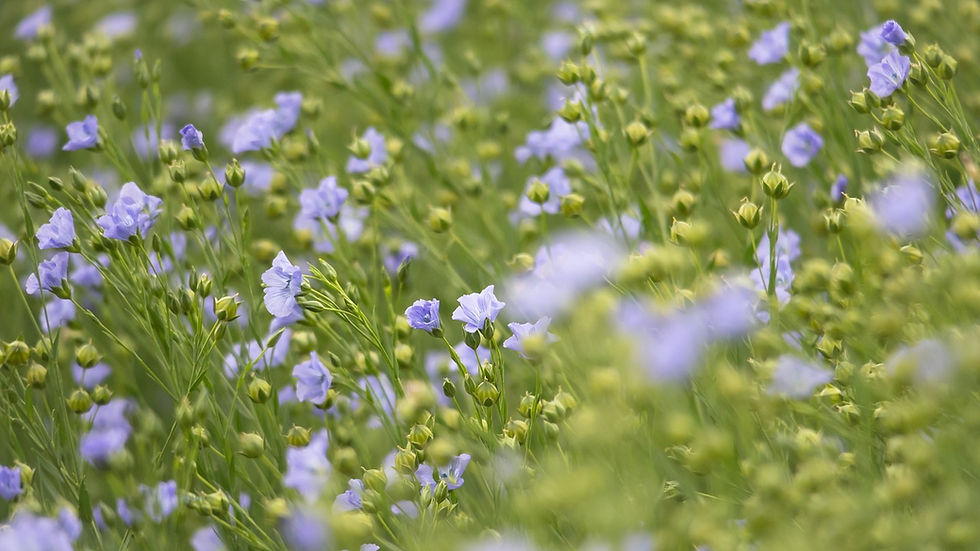Linen vs Cotton: Which Fabric is Better for Hot Weather?
- Tyra Tessitura
- 18 hours ago
- 3 min read
Feeling the Heat? Let’s Talk Breathable Fabrics

When summer rolls in, your clothing should work with the weather, not against it. Two natural fabrics dominate the warm-weather wardrobe — linen and cotton. But which one truly helps you beat the heat?
In this guide, we’ll break down linen vs cotton for hot weather, compare their breathability, sweat-wicking abilities, and eco-impact, and help you make the right pick for your body — and the planet.

🧵 What Makes a Fabric “Good” for Hot Weather?
Before choosing, let’s define the key factors that matter in summer fabrics:
Breathability – Allows air to circulate
Moisture-wicking – Draws sweat away from your skin
Drying speed – Reduces that sticky, damp feeling
Weight and texture – Lighter = better airflow
Eco-impact – Bonus points if it’s sustainable
🌿 Linen vs Cotton: A Head-to-Head Breakdown
Linen: The Cool Queen of Natural Fabrics
Made from: Flax plant
Texture: Crisp, slightly rough (softens over time)
Breathability: ✨Excellent – air flows freely
Moisture-wicking: Absorbs up to 20% of moisture before feeling damp
Drying time: Quick-dry champion
Sustainability: Very high – needs little water, no pesticides
Cotton: The Familiar Favorite
Made from: Cotton plant
Texture: Soft, smooth
Breathability: Good, but less airy than linen
Moisture-wicking: Soaks up sweat, but can feel soggy
Drying time: Slower than linen
Sustainability: Varies – conventional cotton uses lots of water/pesticides
🔥 Which Is Cooler in Hot & Humid Weather?
Short answer: Linen wins.
Linen’s loose weave and quick-dry ability make it far superior in humid or tropical climates. Cotton absorbs more sweat and holds it longer, which may feel sticky or heavy.
If you live in hot and humid regions like India, Dubai, Florida, Bangkok, or Singapore, linen will keep you cooler, drier, and more comfortable.
💧 Which Fabric is Better for Sweating?
Feature | Linen | Cotton |
Absorbs Sweat | ✅ | ✅ |
Feels Dry Longer | ✅✅ | ❌ |
Smells Fresher | ✅ | ❌ |
Dries Quickly | ✅✅✅ | ❌ |
If you’re prone to sweating or suffer from body odor in the heat, linen is naturally antibacterial and dries faster, helping you feel (and smell) fresher longer.
🌱 Sustainability Showdown: Linen vs Cotton
When it comes to sustainability, linen has a lower environmental footprint. Flax can grow in poor soil, uses far less water, and is fully biodegradable.
Cotton, while natural, consumes 2,700 liters of water for a single t-shirt.
💡 Curious about sustainable fashion?
👉 Click here for style guide of Linen shirts in Summer ( Men & Women ) to learn how to shop better for the planet and your skin.
🧺 Care and Maintenance: Is Linen Harder to Handle?
Linen gets softer with each wash. While it wrinkles easily (a sign of its authenticity!), it's often worn that way for a laid-back, effortless look.
Cotton is easier to iron, but linen's air-dry ease makes it great for minimalist wardrobes.
👕 Style Factor: Linen or Cotton for Everyday Outfits?
Linen gives a natural, breezy, premium look
Cotton feels familiar and relaxed
For elevated summer dressing — brunches, beach vacations, resort-wear — linen steals the spotlight.
🛍️ Ready to Switch to Linen?
Ditch the sweat-trap. Embrace breathable, beautiful fashion.✨ Explore our 100% sustainable linen clothing collection for men and women.
🙋♀️ Still Not Sure What’s Right for You?
We’d love to help you choose the best fabric for your lifestyle and climate.
💬 Leave a comment or DM us on Instagram @tyra.linen and at @shreekrishnamills to get personalized styling tips.
📌 Key Takeaways
Linen > Cotton in breathability, drying speed, and sustainability
Cotton is softer but sweatier; Linen is crisp but cooler
For tropical or humid heat, linen is the better fabric
Linen is easier on the environment — and your skin
_edited.jpg)



Comments